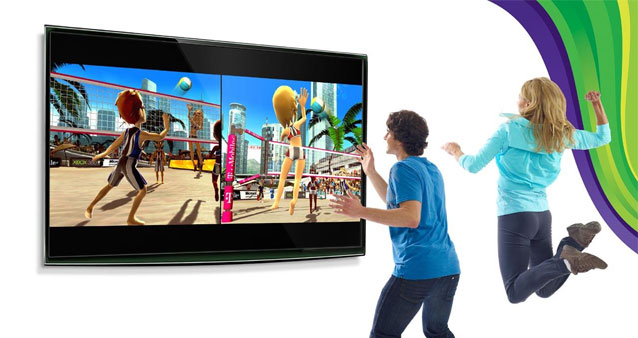


Microsoft’s Kinect has proven itself to be quite the impressive device in a relatively short period of time. It hit the market late last year and sold impressively on the strength of its truly creative technology. Kinect represents the innovation that so few are willing to credit Microsoft with these days. Unique games like Dance Central, and Child of Eden have quickly cropped up and, once experienced, invalidate the idea that Kinect is a simple gimmick. This summer Microsoft is releasing official Kinect drivers for Windows. Microsoft’s Live, Xbox, Kinect, and Windows brands could be hugely impacted by this development. There are a number of scenarios where Microsoft’s gaming divisions could add useful features and deliver a better experience to all users.
First, who remembers the first game to implement to cross platform multiplayer, Shadowrun? We don’t have to talk about it. I just need you to remember it. The multiplayer-only Counterstrike rip off with a sprinkling of magic, got it? Good. Cross platform gameplay in Shadowrun was a bad idea. The best Xbox players were torn apart by merely mediocre PC users. Cross platform gameplay is only be viable on systems that have nigh identical controllers. This is why Windows/Mac OS X cross platform gameplay works in Valve’s Team Fortress 2. In Microsoft’s case the different control methods were too far a bridge to cross for what is a great idea.
Kinect rectifies this problem beautifully. Once developers settle in on both the Windows and Xbox side of things I’d imagine we’ll be looking at a renaissance of cross-platform gameplay for casual audiences. Within Windows Kinect and Xbox Kinect there is only one difference between controls that needs to be addressed, and that is the difference between Windows users sitting and Xbox users standing, which is an easily surmountable issue. Developers can simply build games that are controlled with smaller, more measured movements. This is a clear winner for casual gaming.
A perfect example would be a Bust-A-Move with cross platform leaderboards or even multiplayer gameplay. Controls would be simple, a waving finger on the left hand to control the direction of the shot, and a flick of the wrist on the other hand to fire. This isn’t all though; this sort of boundary-pushing game design plays into Microsoft’s plans for interoperability across all of their platforms and services.
It’s well known that Games for Windows Live struggles to compete with Steam. The only real value that Games for Windows Live offers compared to Steam is Xbox Live Achievements. And let’s be honest, that’s not much of a value at all when compared to Steam Cloud, Steam Achievements, excellent discounts, and truly useful gifting features in Steam. Valve’s Steam is leaping ahead in one more area as well now that Portal 2 uses a steam account on the PS3. Kinect for Windows appears to be Microsoft’s best chance to differentiate in the Windows game market. If the next (metaphorically speaking) Farmville launched on Kinect for Windows and Xbox it would be (metaphorically speaking) hitting the lottery for both the Live and Kinect brands that Microsoft is working so hard to incubate.
Now all of this ‘casual’ talk may not strike your particular fancy, but there’s money to be made here. Where there is money, there will be Microsoft, throwing millions of dollars and the most talented engineers in the industry at the platforms we love. Success in the casual market leads to a better experience for us all. It will help Xbox shed its hardcore only image (this is a bad thing.) Would we have Netflix, Twitter and Last.fm on Xbox Live with a hardcore gaming focus? Consider the uphill struggle the 3DS faces with its gaming focus. Finding a niche in the casual market will alse bring greater feature parity to the Live brand on Windows. Kinect is the keystone to these things, and the Windows community will build on its foundation to the benefit of us all.




 Wolfenstein: The New Order Walkthrough Guide Part 8 - The Bloody Bloody Prison Break
Wolfenstein: The New Order Walkthrough Guide Part 8 - The Bloody Bloody Prison Break Squad: (video game) System Specs (PC)
Squad: (video game) System Specs (PC) Why Your Next Android Smartphone Should be Chinese
Why Your Next Android Smartphone Should be Chinese 5 Warning Signs For Avoiding Freemium Games That Want To Suck Your Wallet Dry
5 Warning Signs For Avoiding Freemium Games That Want To Suck Your Wallet Dry How to fix Battlefield: Hardline Beta Low FPS Issue, Cannot find Beta On PS4 and Battlefield 4 Premium Edition Issue
How to fix Battlefield: Hardline Beta Low FPS Issue, Cannot find Beta On PS4 and Battlefield 4 Premium Edition Issue